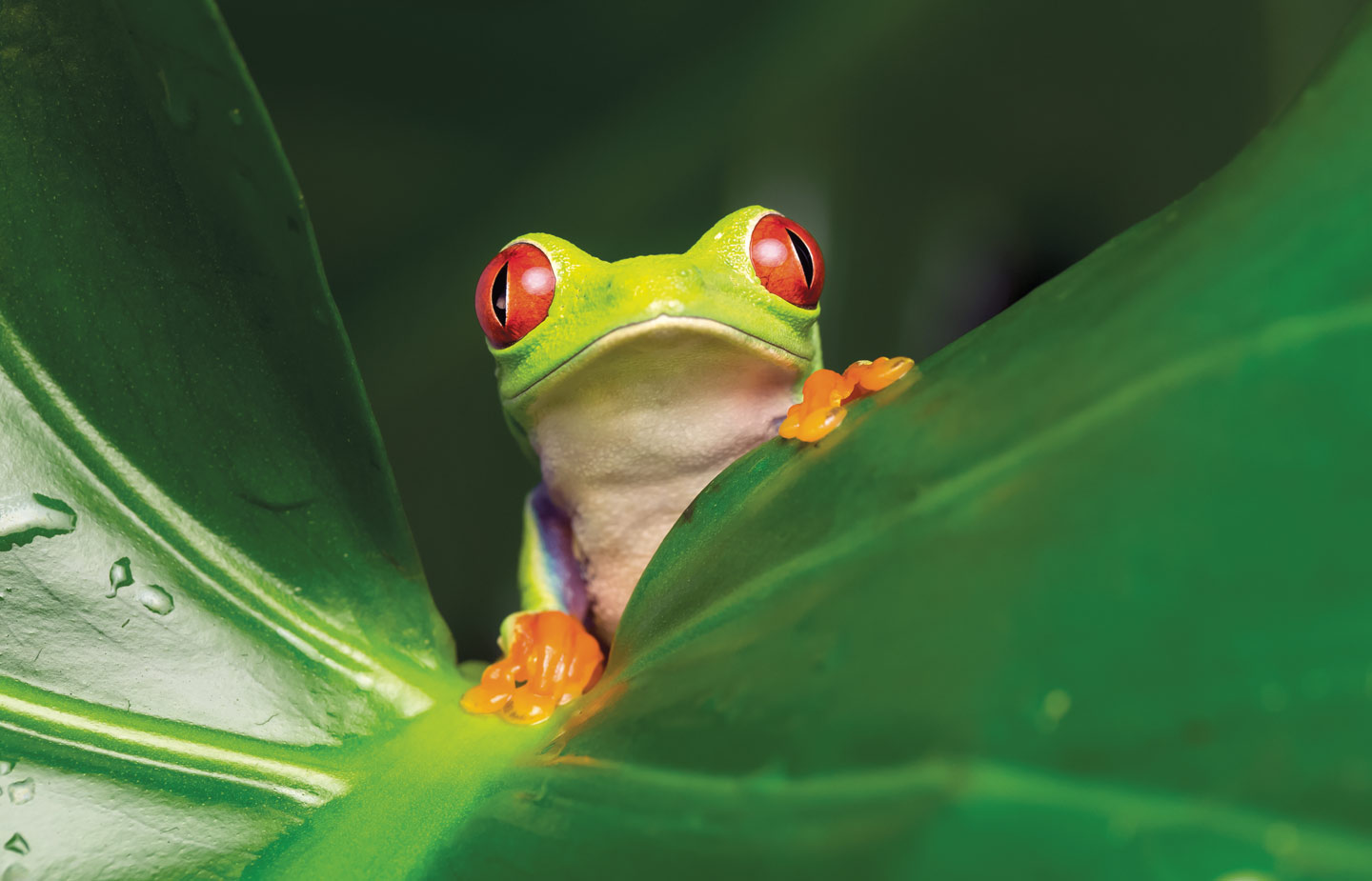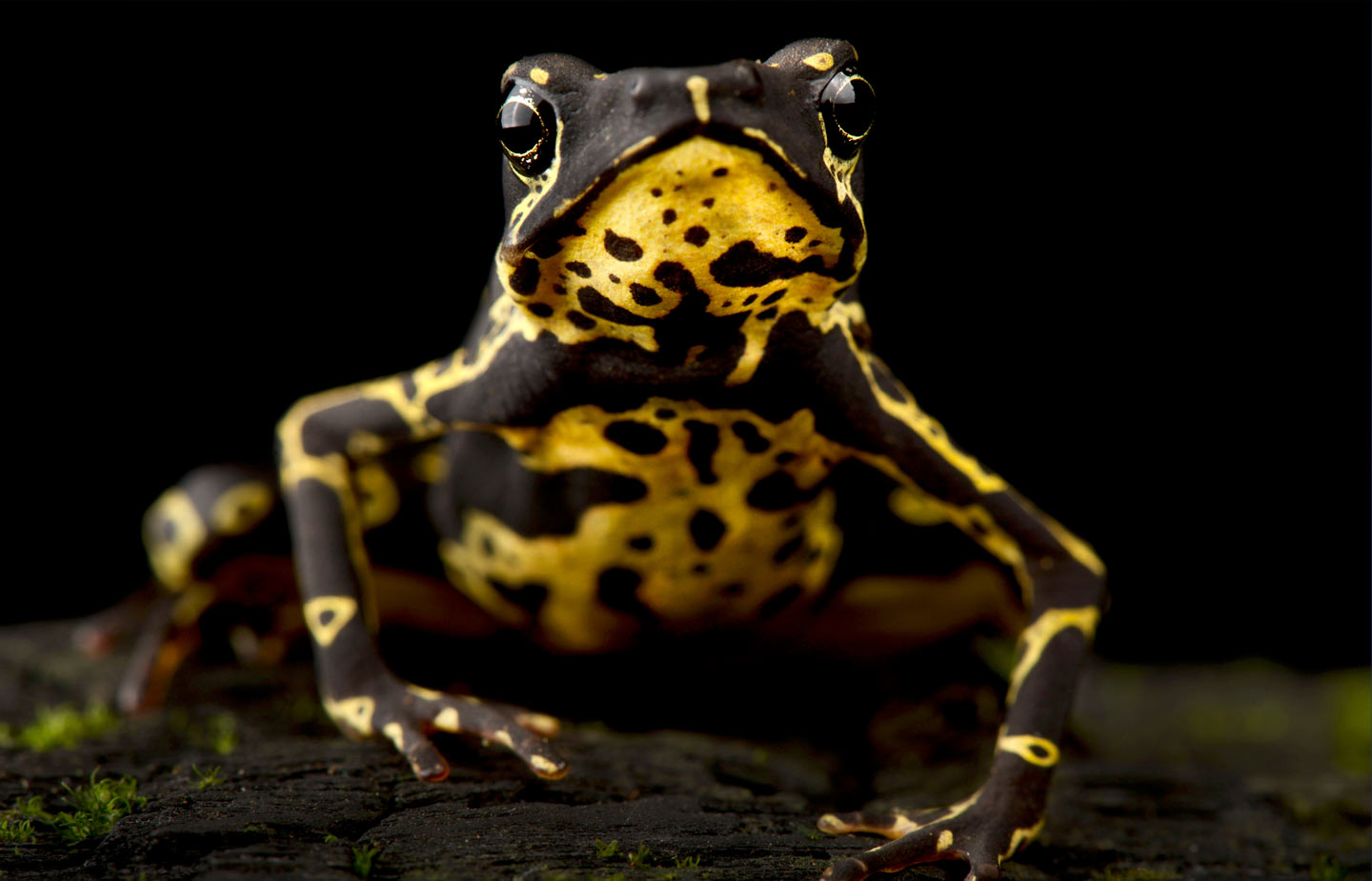Guardian of the Frogs
A deadly fungus is killing the world’s amphibians. Professor Taegan McMahon is determined to save them.
Growing up in southeastern Connecticut, young Taegan McMahon loved to play with frogs. She and her brother—and sometimes her neighbor, then-Professor of Botany Scott Warren, and his family—would explore the outdoors for hours, marveling at the plants and the creatures that inhabit the lush woodlands in and around Connecticut College’s campus.
“When I was younger, you could go to any pond in the spring and find frog eggs, tadpoles, things like that. I fell in love with nature, and that’s how I fell in love with science,” says McMahon, now an associate professor of biology at Conn, having joined the faculty in 2020.
But as the budding scientist became more interested in conservation, she began noticing declines in the populations of her amphibian friends.
“That really broke my heart,” she says. “They just—disappeared.”
The phenomenon wasn’t limited to Connecticut, either.
Across the world, amphibian populations have been decimated by a pathogenic fungus, Batrachochytrium dendrobatidis, or Bd. One of the deadliest organisms in the world, Bd has been linked to the decline of more than 500 species of frogs, toads and salamanders, including 90 that are now presumed extinct or functionally extinct in the wild.
Primarily found in freshwater systems, the fungus effects the skin of frogs, stealing nutrients and breaking down cells. Since amphibians do some of their breathing and regulate water and salt concentrations through their skin, the diseased animals can end up with an imbalance that leads to heart attack and death.
Since 1993, when Bd was identified as the cause of a mass die-off among frogs in Queensland, Australia, scientists have been racing to better understand the unusual parasite within the amphibian system and save infected populations. So far, they’ve had little success.
But McMahon is taking a different approach. And she just might be the one to finally save the frogs.
AS A CONSERVATION DISEASE ecologist, McMahon likes looking at issues across the biological scale—from individuals to populations to ecosystems. Her approach is multifaceted, combining molecular lab work, fieldwork and data-driven modeling to better understand the true complexities within a given system.
She also thinks differently.
“I have some pretty severe learning disabilities and pretty strong neurodiversity. Which can be frustrating, and I did not always feel welcome in science. But over time I have learned to be flexible and kind with myself and to create a space where I absolutely thrive,” she says.
“Because my brain works differently, I tend to ask the questions no one else is asking.”
One thing that puzzled McMahon: Even in remote areas where entire amphibian populations were completely eliminated, the fungus, which can only survive a few days to a few weeks without food, still persisted.
“In the Caribbean, they have these huge, awesome-looking frogs called mountain chickens, and they were wiped out from these isolated ponds. A year or two later they were reintroduced, and Bd wiped them out again,” McMahon explains.
“Typically, if there is no host, there is no parasite. So the question is: How is Bd surviving with no amphibians?”
McMahon began to wonder if Bd could survive on non-amphibious animals, and if they could be spreading it to others.
At first, the scientific community was skeptical. For more than two decades, the focus had been solely on the amphibians. But it didn’t take long for McMahon to confirm her hunch.
In crayfish, for example, McMahon and her team found Bd persisted at low levels, with about 10-20% of the population infected in the wild. They handle the fungus fairly well, so it lives in the crayfish and they release the infectious spores, called zoospores, into the water. Those spores can then infect other organisms, including frogs.


